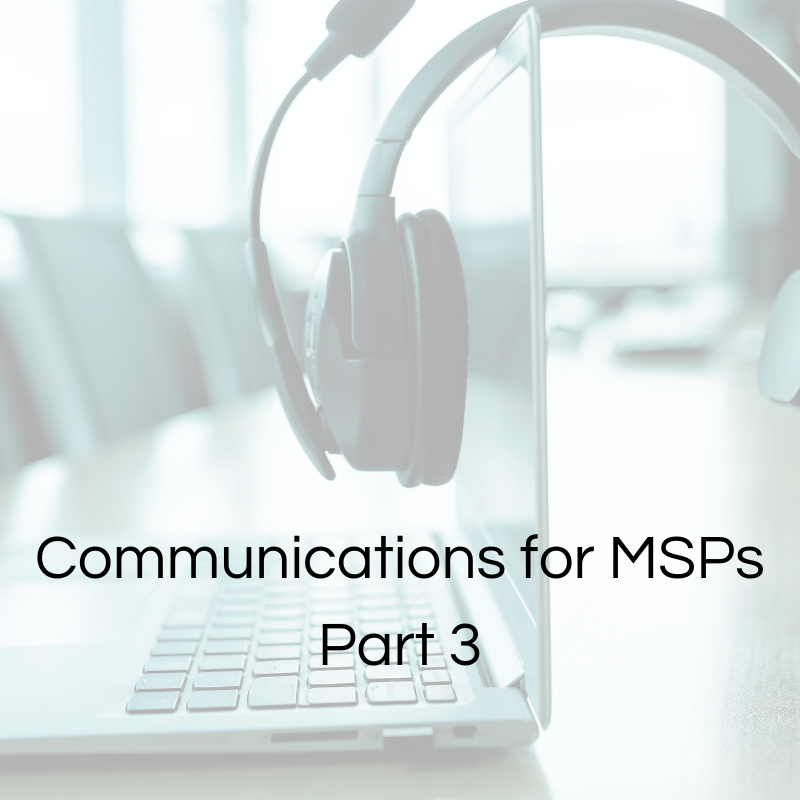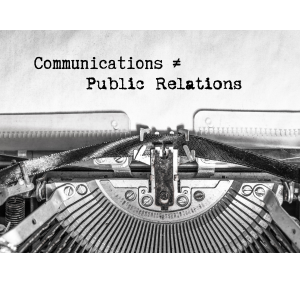In this 3-part series on Communications for MSPs, I share how MSPs should operationalize Communications, starting with how and when to hire Comms professionals, followed by discussing the focus areas, strategies and KPIs for MSP Comms teams and finishing up with Communications best practices in the MSP market.
Part 3: Communications best practices in the MSP market.
By now we’ve discussed how and when to hire Communications professionals and the focus areas and KPIs for Comms teams supporting MSPs. In this last part of the series, let’s talk about some communications best practices in the MSP market. While there are things a Comms team in any industry should be doing, this blog will focus on the things that are specific to MSPs, like:

- Reputation management when you offer both a service and product, and when you deal in the cybersecurity space
- Prioritizing messages and channels when your audience is likely a small business owner or an overstretched IT manager
- Keeping employees engaged when you have a mix of in-field technical service providers, highly technical specialists and support teams, and operational departments (Finance, HR, Marketing, Sales, etc.) whose experiences vary greatly.
Reputation Management for MSPs
Unlike B2B SaaS orgs who rely mostly on product performance and features, as well as a PR and Content strategy to shape their reputation (though that can also be relevant for MSPs), most MSP reputations rely on interactions with service delivery team members – the speed and quality of support, the guidance given for specific technology or equipment, etc.
No amount of excellent thought leadership, awards, or marketing will make up for the service experience, so supporting those team members and combining the service experience with a good CSM or relationship manager is key. A voice of the customer program (VOC) – which a customer communications program would include – will provide alignment around the desired customer experience, ensure observable and non-observable feedback is collected and acted on, and flow the brand experience through the customer one. A good VOC program would also include consistently collecting and publishing reviews/testimonials/case studies, and supporting a referral program.
Also, as an MSP, you are going to be involved in cybersecurity, whether you actively want to be or not. Your clients are going to ask about it, if you use an RMM vendor, which you probably do, you need to be aware of how the vendor is protecting it, the list goes on and on and on.
From a comms perspective, have a plan in place for what and how to communicate with customers and vendors in the event of a breach or other security incident. Templatize as much as possible in advance.
Speaking to the right personas
Every company should have a firm grasp on their “ideal customer profile” (ICP). Depending on the size and scope of the business, you may have several. A collaborative and complete ICP analysis is particularly important for MSPs because buyers, influencers and decision committees can vary greatly when working with small businesses or businesses of varying sizes, complexity, geography and industry.
A comprehensive communications strategy should include discussion, alignment, and documentation of ICPs. It should also prioritize comms and marketing programs in a way that maps ICPs to business goals and realistic investment to deliver the right experiences to these people.
Employee experience for MSPs
Short piece of advice here for MSP internal communications and employee experience – get your people talking to each other and show how every team delivers value for customers and the company.
I’ve seen massive divides within MSPs between the service teams and everyone else and it causes problems on nearly every level. The best way to avoid this is to make sure Comms, HR and leadership are teaming up on an employee experience that emphasizes connection to value for each team, and cross-department interaction. It doesn’t have to be complicated. A buddy system outside their department for new hires, team member highlights, recognition programs, etc. Be intentional about this.
Other best practices that seem obvious but are often overlooked
- Get your customer contact and role information accurate in your CRM and email tool. Seriously. Spend the time to get this right.
- Create accurate and relevant Internal distribution lists, slack/chat, text groups. You should be able to quickly get messages out to relevant employees without having to send an @companyALL type message.
Need a comms expert or thought “we need to work on that” while reading this blog post? Drop me a message.





Leave a Reply